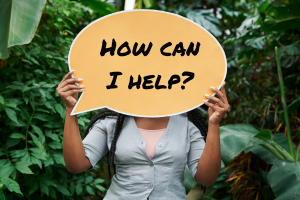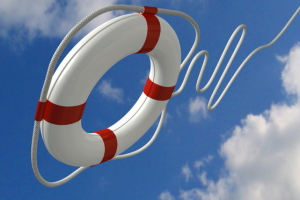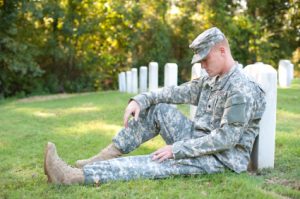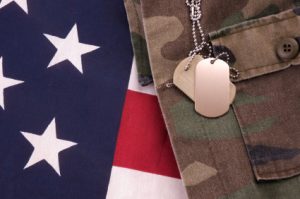Saving Lives From Suicide
 This year marked a major milestone for suicide prevention when the Golden Gate Bridge board of directors approved the first funding toward construction of a suicide barrier on the San Francisco landmark. Since its opening in 1937, the bridge has become the single most frequently used suicide spot in the United States and second most used site in the world, with nearly 1,600 people estimated to have died from jumping off the bridge. The $76 million construction of a steel net that was approved last year is just what is needed to prevent future deaths. A contract to begin building will likely be awarded in March.
This year marked a major milestone for suicide prevention when the Golden Gate Bridge board of directors approved the first funding toward construction of a suicide barrier on the San Francisco landmark. Since its opening in 1937, the bridge has become the single most frequently used suicide spot in the United States and second most used site in the world, with nearly 1,600 people estimated to have died from jumping off the bridge. The $76 million construction of a steel net that was approved last year is just what is needed to prevent future deaths. A contract to begin building will likely be awarded in March.
This historic decision was of particular meaning to Kevin Hines. Kevin is one of only 34 people known to have survived a jump off the Golden Gate Bridge. Like every other survivor of this typically fatal attempt, Kevin reported regretting his decision the moment he leaped from the bridge. I first met Kevin when making the documentary Understanding and Preventing Suicide. In his interview for the film, Kevin remembered, “At the split second I hit freefall, I didn’t want to die. What did I just do? The voices were gone. I was right there, facing ultimate death … I said God, please let me live.”
Kevin is not alone in his experience of having severely self-destructive thoughts (or actual hallucinatory voices) telling him to end his life. These thoughts are familiar to people at risk for suicide, and they represent a dangerous “anti-self” that can cloud a person’s thinking and judgment, disconnecting them from reality and their natural desire to live. Like so many others, Kevin reconnected to his real self only a split second after acting on the will of this vicious anti-self. His story has since become living proof that the suicidal state is transient and temporary, and the will to live can persevere. He has gone on to become an international speaker, author and powerful advocate for mental health and suicide prevention.
Kevin’s experience further exemplifies the necessity of restricting means for suicide. A 1978 study by Dr. Richard Seiden from the University of California, Berkeley showed that people who were stopped from jumping off the Golden Gate Bridge rarely went on to die by suicide. Bridge barriers erected in suicide hotspots like the Clifton Suspension Bridge in Bristol, England not only reduced the number of deaths by suicide on the bridge itself, but did not show an increase in suicide jumps elsewhere in the area. Similar conclusions have been drawn from restricting other highly lethal suicide means like firearms. A study published this year showed that hand gun laws were associated with significantly lower firearm suicide rates as well as a lower overall suicide rate.
Research has consistently debunked the myth that restricting suicide means in one area will only show a spike in suicide in another. As Dr. Seiden noted at the conclusion of his study, “The major hypothesis under test, that Golden Gate Bridge attempters will surely and inexorably ‘just go someplace else,’ is clearly unsupported by the data. Instead, the findings confirm previous observations that suicidal behavior is crisis-oriented and acute in nature.”
Making a method unavailable at the moment in which someone is in a suicidal crisis can keep them alive. Again, suicidal states are transient and temporary; they fluctuate over time. Making it more difficult for someone to access the means for suicide can provide them the time and space necessary to awaken from the trance of the anti-self, to get to the help they need and, ultimately, save their lives. So, how can we get people to the help they need? What can we do on an individual level to help prevent suicide? With World Suicide Prevention Day coming up on Sep. 10, we can all take a little time to learn how we ourselves can act as a suicide barrier for someone in trouble.
The campaign Take 5 to Save Lives is doing a great job of informing people of how taking just five minutes to get informed and involved can make you part of a larger movement to save lives. The campaign lists five steps we can all take right away to become more empowered in the fight to stop suicide. The steps include:
- Learning the warning signs to spot in someone who may be suicidal.
- Joining the movement by signing up to “Take 5” and sharing their message on social media.
- Spreading the word by telling five people about World Suicide Prevention Day.
- Offering support by learning what to do if you encounter a person in trouble.
- Reaching out if you or a friend needs help. Learn who you can talk to and where you can go.
Warning Signs for Suicide Can Include:
- Disrupted sleep
- Isolation
- Loss of interest in activities
- Extreme self-denial, lack of pleasure
- Extreme self-hatred
- Feelings of not belonging
- Thinking of self as a burden to others
- Sudden positive mood change
- Suicidal talk
Suicide is often swept under the rug and not talked about out in the open. Yet, almost 1 in 5 people have been personally impacted by a suicide. The most recent data shows that suicide is the tenth leading cause of death in the United States and has been on the rise for eight years in a row. We can all do our part to remove any stigma by taking the subject out of the shadows. I urge everyone to find a way to get involved and welcome anyone to join me along with Kevin Hines on Sep. 9 for the free suicide Webinar, “Help Save a Life: Understanding and Preventing Suicide.” When it comes to suicide, one moment can make a difference, and a little knowledge can be the light that saves a life.
If you or someone you know is in crisis or in need of immediate help, call 1-800-273-TALK (8255). This is The National Suicide Prevention Lifeline, a free hotline available 24 hours a day to anyone in emotional distress or suicidal crisis.
Tags: National Suicide Prevention Lifeline, Suicide, suicide prevention, suicide warning signs, warning signs2 Comments
Leave a Reply
You must be logged in to post a comment.










I recently married a retired army veteran who has PTSD from his 2 tours in Viet Nam. We’ve been married 1 year and I knew he had ptsd BUT I’m learning more that I “really don’t know about it at ALL!” reading the articles on PsycheAlive has helped some BUT I want to find a site that I can “chat” with other women who can help me understand their husbands more. Its becoming really scary the longer we are married and I need HELP in knowing how to handle his actions, his outbursts and need to know how and what to say OR NOT to say!! Do you know of any sites with live counselors or especially others who to chat with to help me? Thank You!
I’m not a professional and don’t know of any professional site to help, but I think they have a group on Facebook. One for women and one for men & women. Wish I could do more! It makes me feel bad to see no responses on your question, you’re plead for help and no one kind enough to give it Or to have just answered. The professionals want money and most everyone else is Not knowing how to help. Yes you have to pay for your services, but someone sick with depression or any other mental condition doesn’t feel that they personally matter when it’s dollar signs up front. A volunteer can accomplish a lot more with someone sick and or drowned in depression. They can actually feel that they personally matter. Someone on the clock counting the minutes and demanding pay is less likely to make a big difference in a patient’s life. Not that they don’t help, they do help but it’s more difficult to do. Sometimes it’s best for loved ones, family and friends to just be there and to listen when needed and wait to speak till the person in need ask. Say supportive things & give comfort and positive output plus suggestions ending with a question mark and of course no negative input. The main thing is having someone there with the person in need, whether you’re communicating or Not. Your presents are desperately required & needed. It gives the person a strong feeling of Love & security. Being Loved is good medicine! `God Bless ~